


May 3, 2020
JOHN BROMBAUGH
–––––––––––––––––––––––––––
Rediscovering Historic Organbuilding Techniques
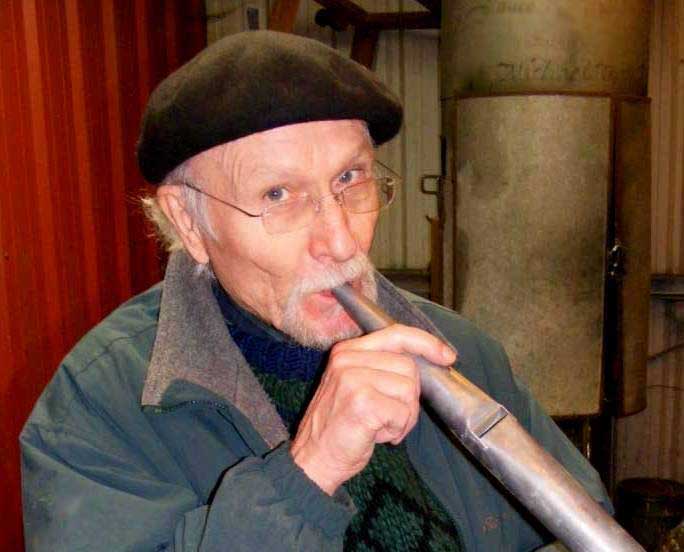
May 3, 2020
JOHN BROMBAUGH
–––––––––––––––––––––––––––
Rediscovering Historic Organbuilding Techniques

Introduction
John Brombaugh has been a seminal figure on the American organ building scene since he first opened his own workshop in 1968. His active career as an organ builder spanned more than four decades with his two workshops, first near Middletown, Ohio and later in Eugene, Oregon producing some 66 organs. The list of his employees over the years is a veritable “Who’s Who” of organ builders and other instrument makers. The interviewer, Vox Humana Associate Editor Bruce Shull, worked in John’s Ohio workshop from 1973 until 1975. In those days, a lot of development was taking place very quickly. This meant that a young apprentice was exposed to a myriad of ideas and organ building and woodworking techniques. Of primary importance was that a pipe shop was being set up which would mean that the organs would have pipes made in-house.
Much has been written about John and his career, including an extended thesis by Homer Ferguson III, written in 2008: "John Brombaugh: The Development of America’s Master Organ Builder" (the thesis also contains a complete Opus List and list of employees). However, John has only in some instances talked candidly about some of the ideas and concepts that became central to his work. He agreed to record some of his ideas last fall. The following interview captures some of these thoughts in his own words.
––––––––––––––––––––––––
John, thank you very much for agreeing to this interview. You began building historically-informed organs at a time when such instruments were not only rare, but often actively disliked. How did you become interested in old organs, and which historic builders influenced your work?
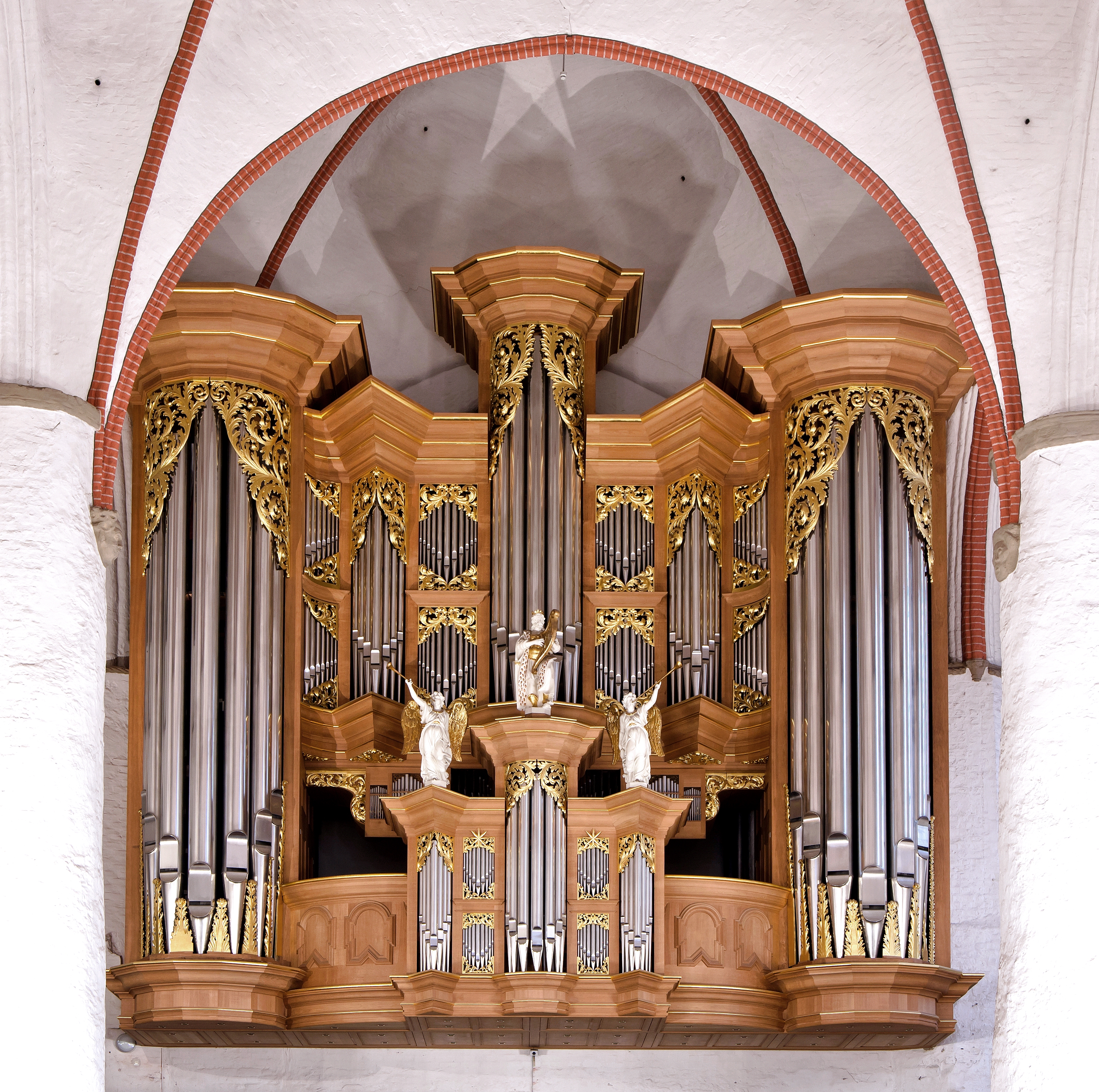
It all began when I heard the first recording of E. Power Biggs playing the Arp Schnitger organs in Steinkirchen and Neuenfelde — that opened a whole world to me, especially with regard to tuning systems. Schnitger's major organs were always tuned in meantone, and I don’t think those organbuilders knew about well-tempered tuning at all until later. The really significant Schnitger instrument we still have left, St. Jakobi in Hamburg, is not tuned in meantone now — it is actually a modified meantone temperament based upon something Jürgen Ahrend [the restorer] and Harald Vogel worked out that was first used in the Schnitger organ in Norden, Germany when it was restored in 1985. That is a very interesting temperament. The Jakobi Schnitger was of course originally in meantone.

Even though I have enormous respect for Hendrik Niehoff, I don't think that he comes close to his teacher, Jan van Covelens, who, in my humble opinion, is really the beginning of fantastic work in the Dutch School which ultimately had an enormous influence on the German School as well. But that is also very tricky. As much as I think there is a connection between the Dutch and the North Germans, what you have to stop and think about is the fact that the Scherers in Germany, who were incredibly important, were really quite independent of the Dutch influences. It's not that I don’t have enormous respect for the Dutch, but I perhaps tried to play a little bit too much in favor of the Dutch...
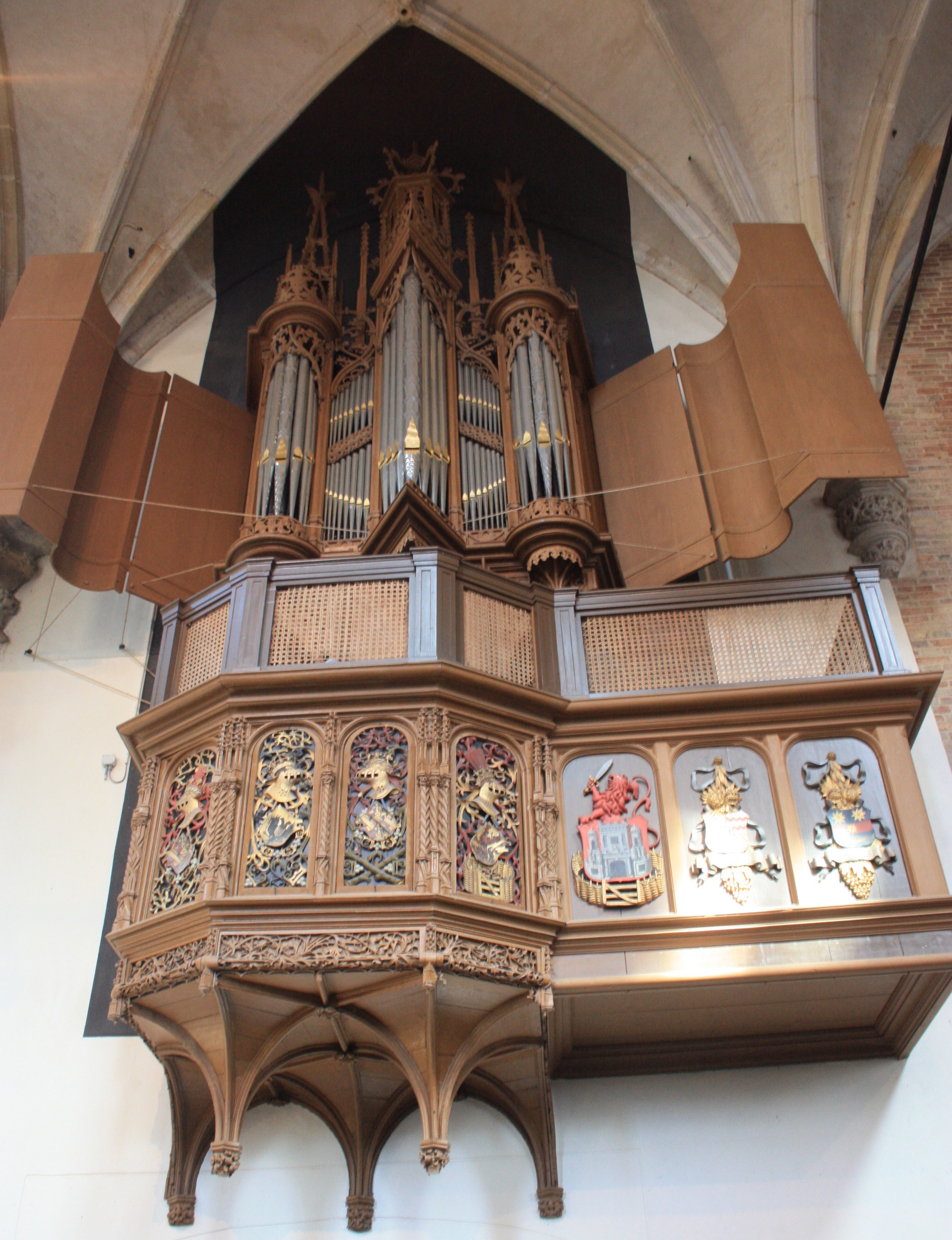
I remember a fantastic thing that happened during one trip to Holland — we ended up going to Alkmaar, and I wanted to go to the Grote Kerk [home of the 1511 van Covelens organ]. It was evening and I thought, at this hour, the church will be closed. But we got there, and they were having a Dutch Reformed vespers service. It was being held up in the choir of the church, and a very famous Dutch organist, Piet Kee, was playing. We got there a little late but sat near the back and tried to sing with them. Afterward, we wondered about seeing the organ. We walked up underneath it and Piet looked over the gallery rail and saw us downstairs. He said, “I don’t know if you realize, this is the oldest organ in the Netherlands and it still works. Would you like to see it?” Ah, that was so interesting! It was before Flentrop did the major restoration years later.

One characteristic feature of many of your organs is that the principal pipes seem to really sing. How did you develop this unique sound?
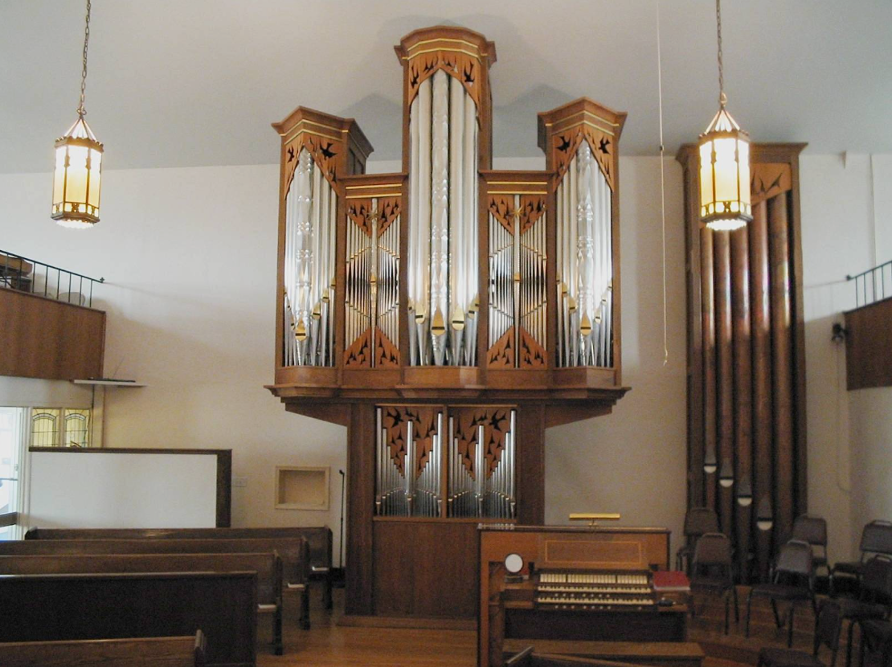
I had been a boy soprano in the Inland Chorus in Dayton, Ohio (I could sing high G when I was a kid), and I was very interested in singing. I think the incredible connection the pipe organ has with singers is, auf Deutsch, “nicht zu glauben” ("hardly to be believed"). I think it is very important! In our first large organ in Lorain, Ohio, George Taylor and I were working on the high notes in the façade. George said, “You know John, if [Rudolph von] Beckerath had a problem with a pipe like this, he would just cut it up" [raise the height of the mouth opening]. That was new to me — I never thought one would do that. I thought the cutup was set in the beginning, and I learned with Fritz Noack that you do it perfectly and you don’t mess around with it. And George said, “No, no, you don’t worry about that, you just cut it up until it sounds right." So I started cutting the pipe up a little bit, and it immediately started behaving better. And then I kept cutting it and cutting... and what I finally learned later is that you can cut it up so high that it doesn’t work anymore. Then you are in real trouble! Later on, Harald Vogel said to me, “You know, the way you are voicing these pipes, they sound vocale.” And I thought, if you really work on the principal pipes properly, and get them making the right sound in the organ, then they do sound "vocale."

It's absolutely amazing that, of all the musical instruments from Western Civilization, there is nothing that sounds quite so much like the human voice as a well-voiced principal pipe. The fact is there is a relationship that no other musical instrument has — I think it's really fabulous! This characteristic was already present in the pipe organ a thousand years ago. It seems to me, on the other hand, it’s really sad that the majority of people who work with organ building now don’t realize this. They don’t know how to make pipes that have the sound of our voices.
Were there other instances where you were able to achieve this special sound quality?
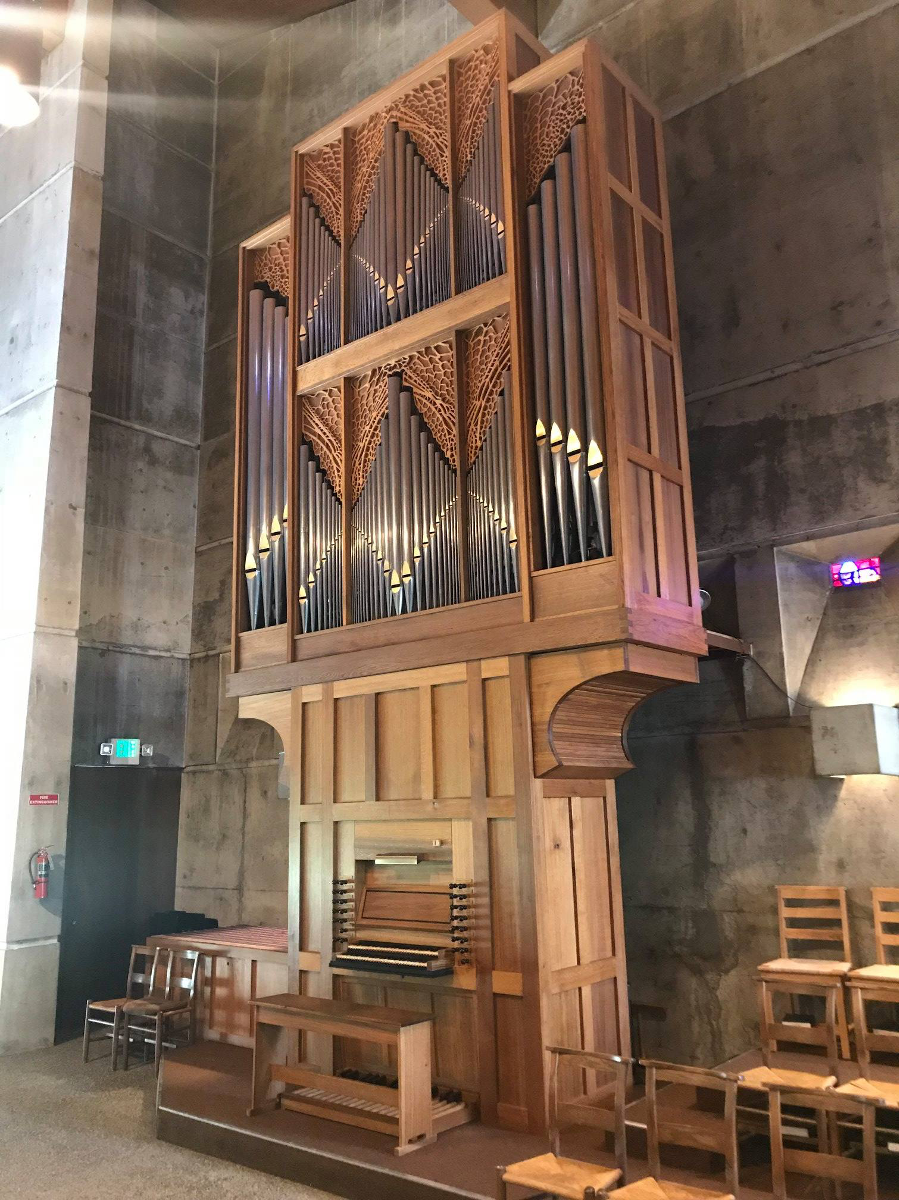
I didn't try to make the organ necessarily be the equivalent of other musical instruments. For instance, it was very interesting working with David Dahl on the organ at Christ Episcopal Church in Tacoma. Ours was a very interesting relationship — we really had our minds in different worlds, but we became and still are good friends. David was in some ways very critical, and that was all right — I don’t mind the person that I’m building the organ for to be critical, but I don’t want them to tell me how to do my work! I would voice when he was away, and then he would come later to hear the progress. At first, he really wanted me to make the Christ Church organ very quiet and to have sort of an Italian-like sound in the principals. I had already been to Italy, and I love Italian organs! I tried that for a little while, but thought it was going to be a little bit tricky — I didn't see how this was really going to work for the congregational singing if the organ had such a character.

I finally decided that I really needed to raise the cutups a little bit on these pipes and to get more of my normal voicing characteristics. I did it, but I was afraid the next time David heard the organ he’d be furious that suddenly the Italian flavor was gone. I didn’t want to disappoint him, so when I voiced the Prestant 4’ in the Oberwerk, I worked hard to try to get that stop to have a little bit more “stringy” sound. It was not loud — it was a mild sound — but it had a little bit more overtones in it. Which, of course, is just perfect for the 4’ stop upstairs (in the organ) because, if it ends up being another flute, that wouldn’t work. There was already a good flute in that division at 4’. So I really worked to try to get this quasi-Italian sound, even though in the Italian organs, like the incredible organ at San Petronio (Bologna), the wind pressure is only 51mm.
Johann Sebastian Bach: Fantasia in C Major, BWV 570, performed by Mark Brombaugh on the 8' Principal stop on the 1979 John Brombaugh organ at Christ Episcopal Church in Tacoma, Washington.
Your extensive study of temperaments and tuning is legendary. Were you interested in this before hearing those early recordings by E. Power Biggs?
I remember when my teacher, Mr. Zech, first started giving me lessons. When I started looking at the keyboard I thought, “this is really weird.” I knew what an octave was. It had seven white keys and then groups of two black keys and three black keys. But why was this the layout of the keyboard? I remember my frustration and confusion with this.
I had to study a lot of math as an engineering student, and I’m glad I did. The very interesting thing about all of that is that you have to go back and study geometry, which is from Pythagoras. He was also basically the inventor of our modern Western musical scale. If you start with any F and go a fifth up, you have C; if you go up another fifth, you have G, and up another to D, then A, then E, then B — now you’ve got all the white keys on the keyboard, and this is due to the Pythagorean characteristics. This has been around with us for 2500 years!
Tell a little about how you decided to tune your Lorain organ in Werckmeister. Wasn't this quite a daring thing to do at the time?
It was very simple. There was a recording of the 1671 Pieter Backer organ in Medemblik, the Netherlands, soon after Flentrop had restored the organ under the supervision of the Dutch organ advisor, Cor Edskes. Cor was incredible — when I first heard the Rückpositiv Dulcian 8’ in the Aa-kerk Schnitger organ, I told Cor, “I have never heard anything like this,” and Cor looked back at me and said, “And you never will again.” I bought the recording just before going to work for Beckerath in Hamburg, Germany in 1967. When I got home, I was totally blown away when I finally listened to it. David Boe, the organist of First Lutheran in Lorain and Oberlin Conservatory organ professor, happened to go on a sabbatical to study with none other than Gustav Leonhardt. I suggested that David should go listen to the Medemblik organ to see what he thought of it, having already suggested that maybe we could tune the Lorain organ in this temperament. David made the visit, and when he came back he said, “Well John, I think it is okay — we should do that!” I said, “I’ll tell you what, I’ll get the Prestant 8’ working for next Sunday and we’ll see how it goes. If it doesn’t work out, I will re-tune it, but if it does work, we can keep on going.” We did indeed keep on going — David was totally blown away.
The result was that the Lorain organ was tuned in Werckmeister, and it was due to having listened to the Medemblik recording. Of course, that organ would originally have been tuned in meantone. The Dutch were very much stuck on meantone — and that is not a bad thing!
Some people argue that equal temperament is, in fact, historic, and that we shouldn't have extreme systems. One example they often use is that Franz Caspar Schnitger tuned the large organ in Alkmaar to equal temperament in 1723. What are your thoughts on this?
I’m not saying that it's incorrect, but I have lots of reservations. Cor Edskes was not fond of non-equal temperaments. So even though he advocated using Werckmeister in Medemblik, he was actually very reluctant to start getting very far from equal temperament. I don’t really understand that... so I was the bad guy for pulling the world away from equal temperament. I have only one organ that is not transposable that is tuned in equal temperament: Opus 2 in Ithaca, New York, which is still that way.
Could you tell us more about that early endeavor?
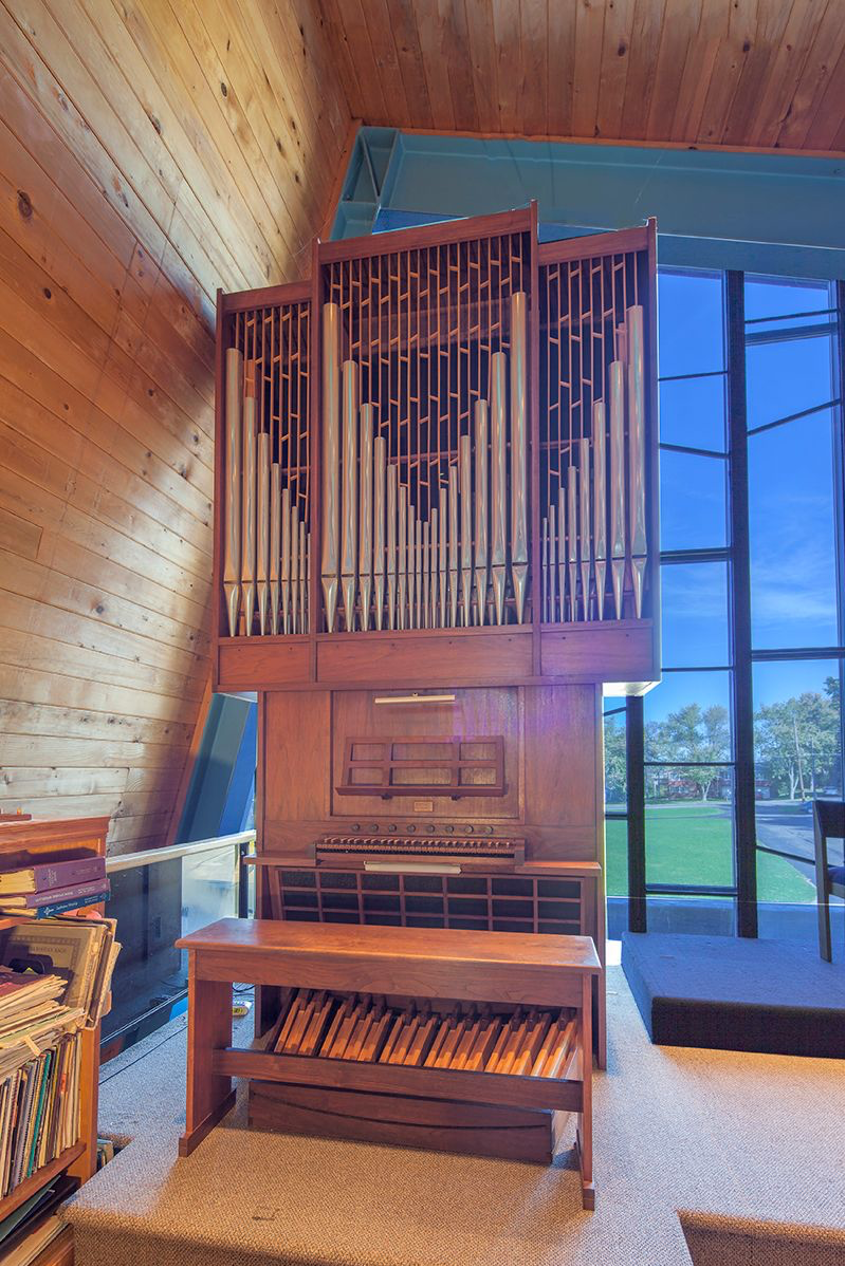
I had fun building that organ. Some of the pipes were voiced in my bedroom! It has a Schwimmer [a modern device that stabilizes wind pressure] on the bottom of the windchest for wind regulation. That was what Fritz Noack used back in those days and I didn’t know otherwise. It was very difficult to make it really work well. The organ also had a Meidinger blower, which was a very good blower, but it also got super hot! So that would make the pitch rise while tuning.
The Ithaca organ case is only 500mm deep, which is very shallow! Also, the back wall of the case is made up of glued-together Subbass pipes that swing open on a long hinge. The playing action is figured out so that the pipes remain standing on their wind supply when the pipes are swung open.

All of the pipes other than the wood bass pipes were built by the Stinkens firm in Holland. Stinkens was not the pipe making company that Fritz normally used. The pipes were really good. It has a 4’ Principal in the façade and a Gedackt 8’ with a 2’ Flute that was conical. I didn’t really understand how to build a plenum at that time, but it had a 4-rank Mixture, which I had to tune by ear. And of course, when I closed up the back, it would go out of tune, so I had to open and close the back doors many times to get it tuned. I was not at peace until it was really in tune. I really can’t stand it when an organ is not in tune.
You have visited an organ that I am curious about — the Neuenfelde Schnitger organ. I have not seen it since its recent restoration but hope to soon. What was your impression?
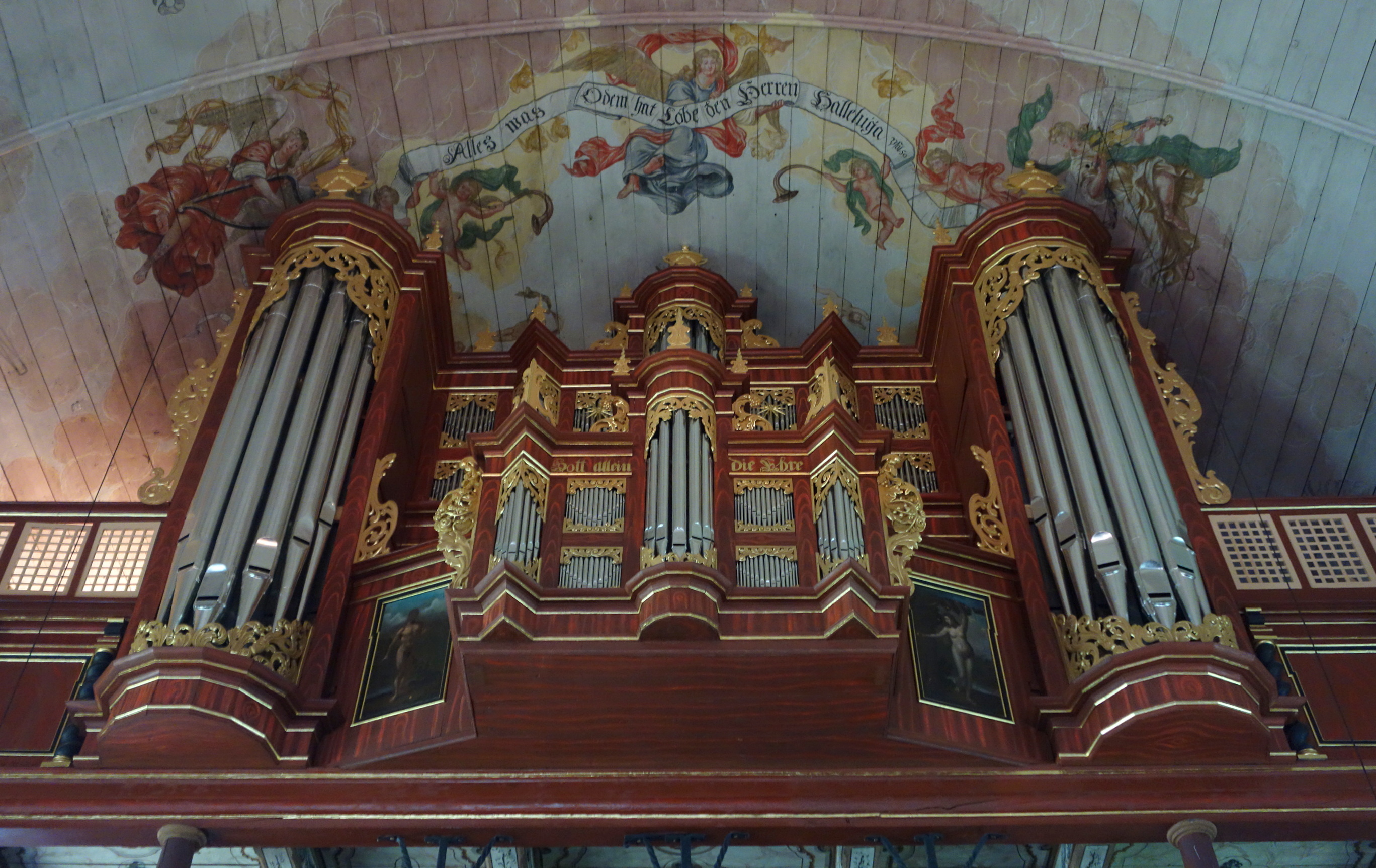
Neuenfelde is very interesting and in a very special situation. Apart from it being in the church where Arp Schnitger is buried, it is the largest two-manual organ he ever built. Kristian Wegscheider did the restoration and it is good, but I think that the character sounds like a Wegscheider organ. I am not saying that is bad! I’m sure the same thing has happened to all the organs that Jürgen Ahrend has restored, to an extent. After a person does this kind of work, the organ takes on the characteristics of the person who did the work. I can’t prove this, but my feeling is that what we think are Schnitger organs are more than likely far away from really being a Schnitger organ in the way they sound.

I have only seen the Neuenfelde organ one time and that was before the Wegscheider restoration. It was like a shadow of what it must have once been. It reminds me of the time you and I visited the Norden organ in 1974. You can tell there is still good sound-producing material in there but it seems to be veiled...
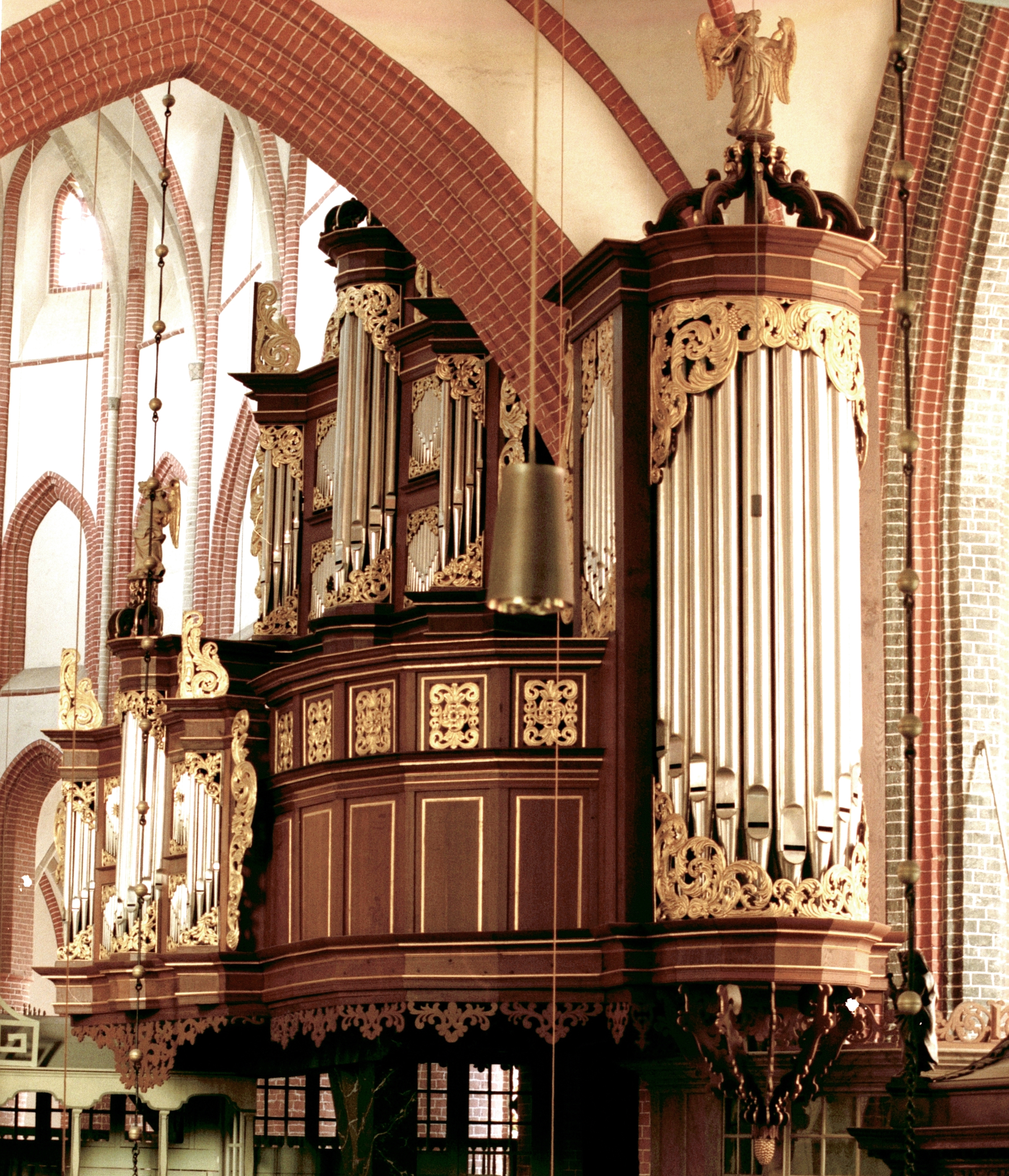
Jürgen Ahrend did the restoration there in about 1985, which is when I was working on my organ installation at Southern Adventist University in Tennessee. Judy Glass, the organist there, had gotten to hear the Schnitger organ in Norden, Germany, and she was raving about it. And, the fact is, it is mind-blowing. The temperament is fabulous!

The Norden and St. Jakobi Hamburg temperaments were both very influential. How do they differ?
They are actually identical. The difference is the Norden temperament uses the Pythagorean comma [a comma is a very small interval, usually between two enharmonic notes, such as E-sharp and F] and Hamburg uses the syntonic comma; then there also has to be one place where the schisma [the difference between a Phythagorean and syntonic comma] is inserted (and that is in E-flat). I think the Norden temperament is supremely better, though Jakobi actually sounds remarkably good. In Norden, the organ works differently depending on where you are in the room. If you move from one place to the other, the sound changes drastically. The choir area is very reverberant.
One of Schnitger’s best-preserved organs, now at Cappel, is presently tuned in equal temperament. That organ would be interesting to hear in meantone, would it not?
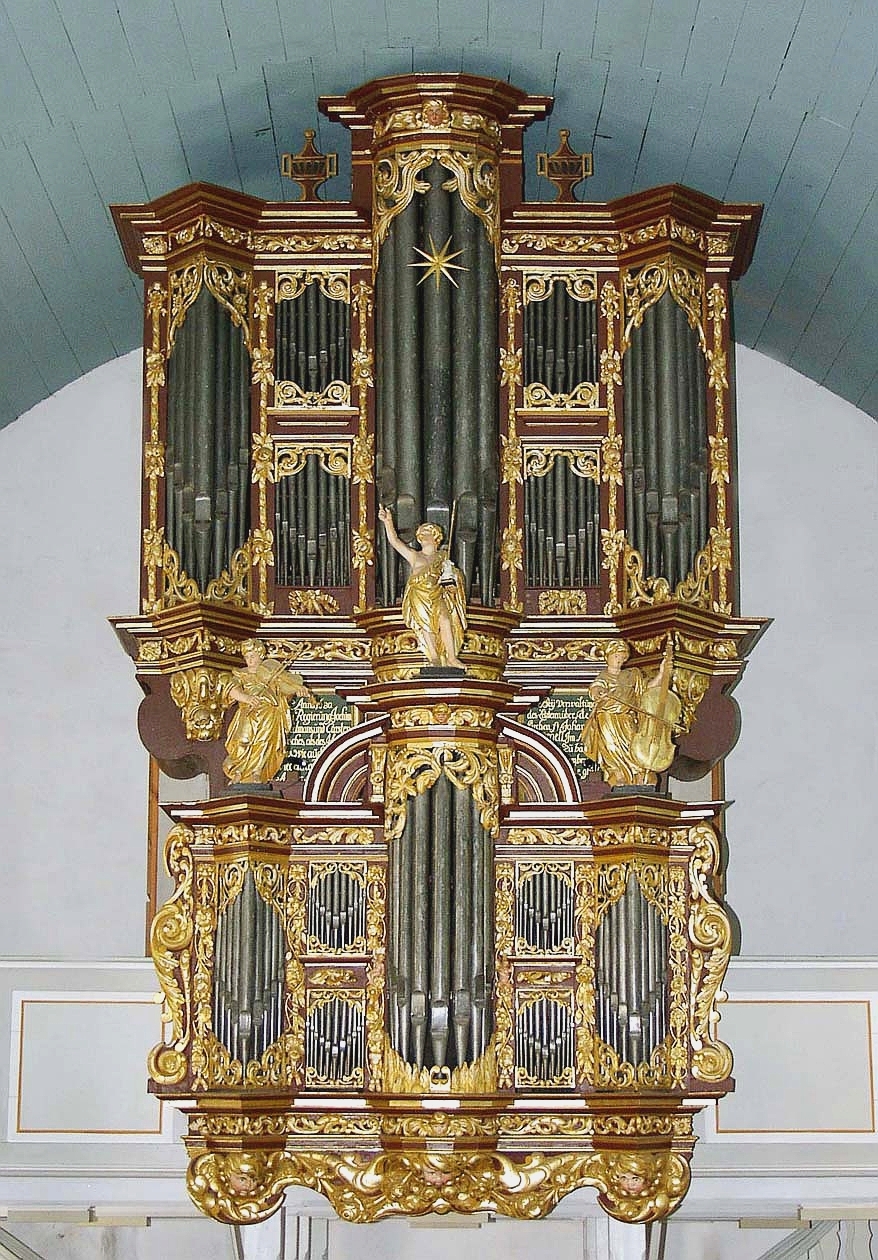
The organ had to be moved in the first place because they had to tear down the church, so the instrument was available and the little church in Cappel was able to buy it, and it was moved in 1816. Harald Vogel said “This organ as we hear it right now was in equal temperament when it was originally installed here and it has never been changed.” Being in an equal temperament, of course, was extremely important when Helmut Walcha made the recordings of Bach there, because there was no clash with the music as there would have been with meantone.

But in my humble opinion, I just think that equal temperament is a disaster for the pipe organ. When it is used in the French organs, like Cavaillé-Coll, ordinarily they are in large churches that have so much reverberation, you cannot hear the characteristics of the beats. I would not go around changing Cavaillé-Coll organs, but I think in the case of the majority of instruments, being tuned in equal temperament is disastrous to the way an organ sounds.
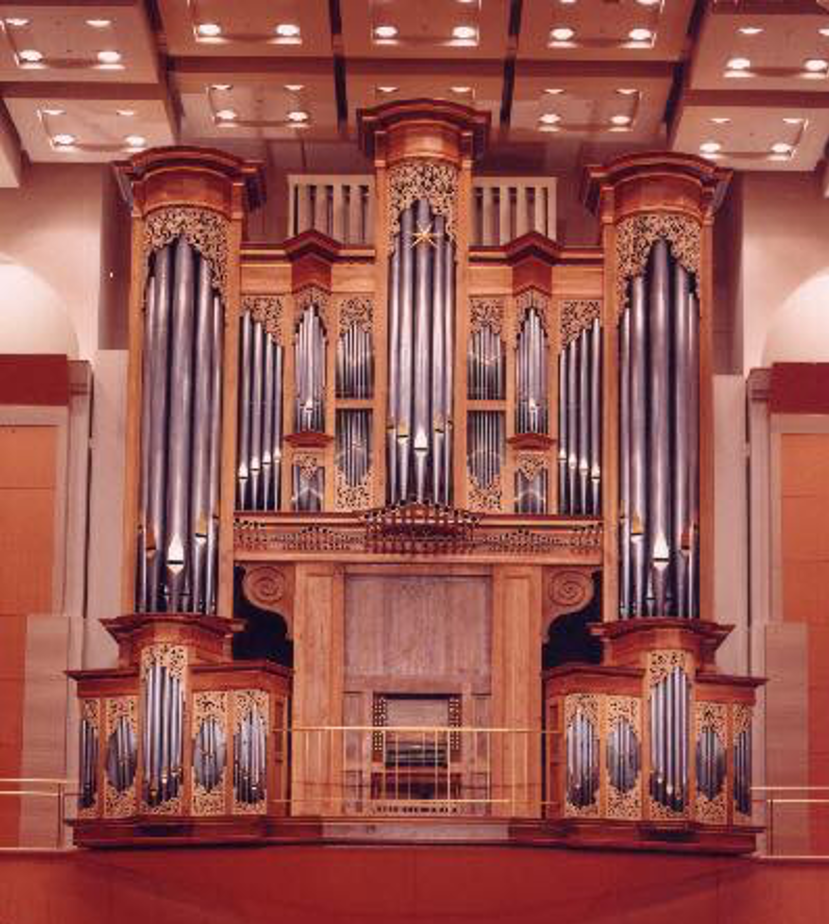
I wrote into the contract for my organ for the concert hall in Toyota City, Japan that the organ would be tuned in Kellner [temperament]. Since it was in the contract, I did not have any kind of argument when I was voicing the organ in Japan. I actually got a rave review from the concertmaster for the Toyota City orchestra, who was a violinist from Tokyo. He came down and they had their first practice with the organ. I didn’t want to bother the musicians while they were having their big rehearsal, so I left and returned later when I thought I could get back to work. The concertmaster happened to see me from far away — and not many people wear a beret like I do — so he saw the only person in Japan who had a beret and he immediately started waving. I didn’t know he was waving at me, so I kept going. Then I realized who it was and stopped to chat. He said, “Mr. Brombaugh, I need to tell you, I have played together with a lot of organs during my life as a violinist. I have never played with a pipe organ that worked like the organ you have built here.” And I felt so good to have a violinist on my side!

I have found that violinists (among other musicians) are often happy to have the tempering explained to them and then they often take playing with it as a challenge. They can easily tune to the organ if they only know in which direction to alter their intonation.
Well, you know that is precisely the situation with the orchestras. Orchestras don’t have a temperament. Equal temperament is monkey business from their viewpoint. Especially when you know that they tune their instruments in perfect fifths!
Are there any other historic instruments that shaped your ideas about organbuilding and tuning?
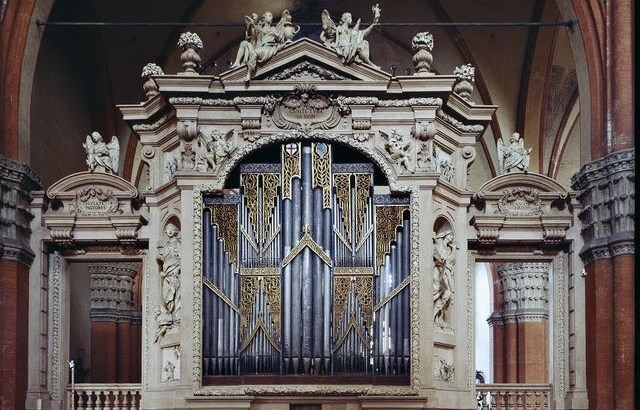
As I have come to learn more and more, the North German and Dutch are quite similar. As much as I love them — and I do love them very much — I am also very much interested in the Italian organs. One special organ is in San Petronio in Bologna, built by Lorenzo da Prato around 1475, the end of the time of Pythagorean tuning. It is a little bit hard to justify meantone tuning coming much sooner than maybe 1480. I think this is the beginning of the time when meantone starts to come into the world. It is so very important because, when you tune in Pythagorean tuning, you really cannot play major thirds. And so the whole musical idiom prior to this was something very different from what the majority of us are acquainted with. You can only play a lot of open fifths and two-part music — no chords.

I think this is also why the pipe organ starts having a chorus built out of these fifths and octaves, because there is no trouble with those intervals in Pythagorean tuning. It doesn’t mean that I think the organ has to revert to this, but I think the musicians — the people in the organ world — need to understand. Of course, if you are in the nineteenth-century organ world (which is where a very high percentage of organists seem to be), then it doesn’t make any difference. But in my case, I’m too much connected with the old instruments and their music. And it is a very odd phenomenon for me because I like later music too. I also love jazz and I listen to it every night.
How do the acoustics of the room play into all this?
We went to Groningen, and there were two concerts that we were able to attend one evening. The earlier one was played by Harald Vogel in the Aa-kerk. They had nice blue chairs that sat down in the main nave filling up the big space and they were all occupied. A large crowd does not inhibit the acoustics there and the acoustics are incredible! Later we heard a concert played by Hans-Ola Ericsson in the Martini Kerk. They both happened to play one particular piece in both concerts: Bach’s Fantasia in G Major. The sound of the two organs was completely different! And so was the difference in the reverberation characteristics of the Martini Kerk versus the Aa-kerk. In the Aa-kerk, you hear the sound instantly and it comes directly to your ears, then the direct sound disappears in a few seconds. But that gets the room excited, and then the room carries on for maybe seven seconds for the reverberation time. The reverberation does not interfere with what you are hearing instantly. In the Martini Kerk, you can’t play anything where you don’t immediately have the next sounds coming on top of it. It gets mixed into this fray of music. You can’t tell what the music is. It is so interesting.
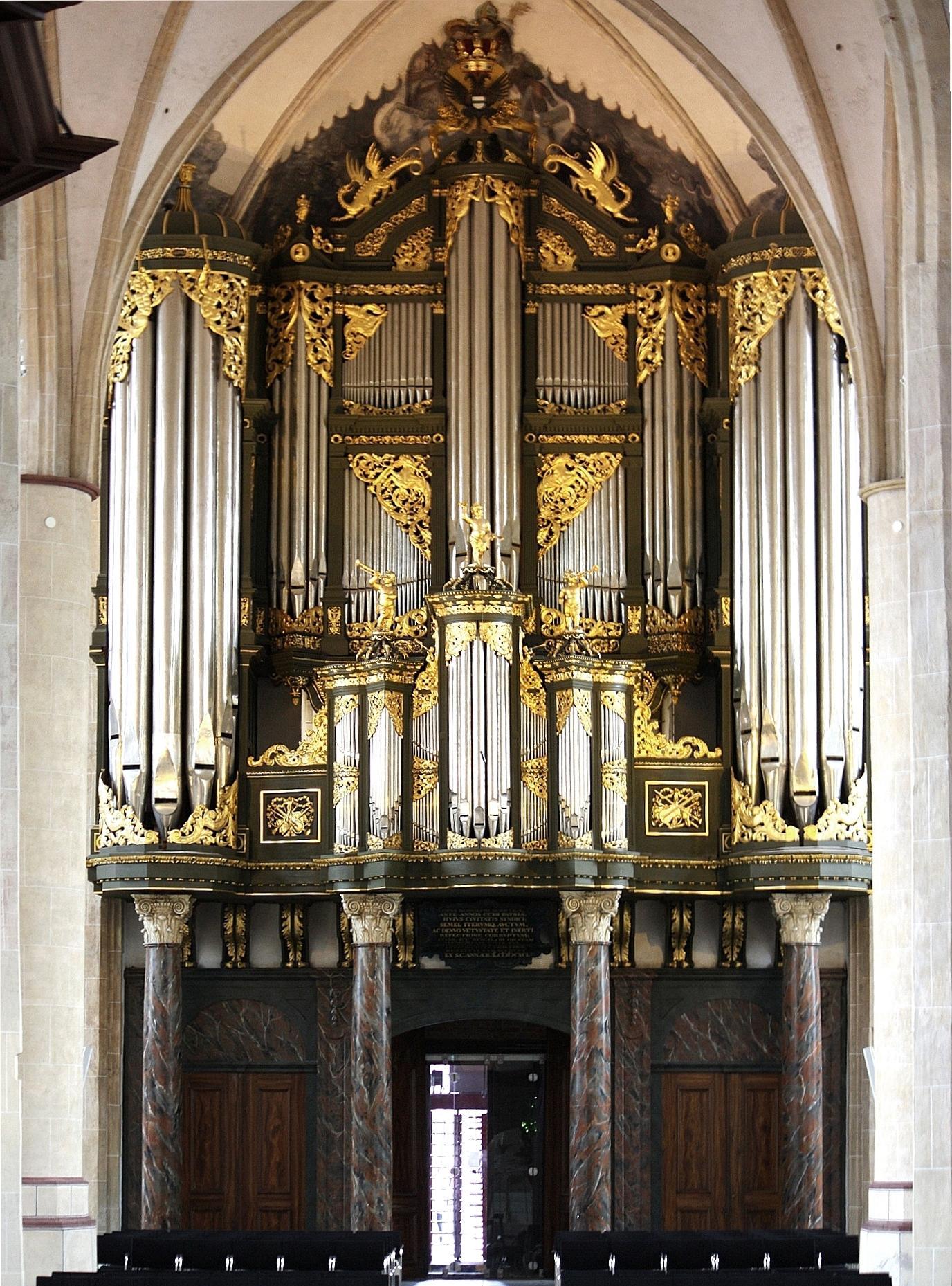 The organ at the Martinikerk in Groningen, the Netherlands; Arp Schnitger added the 32' pedal towers in 1691. |
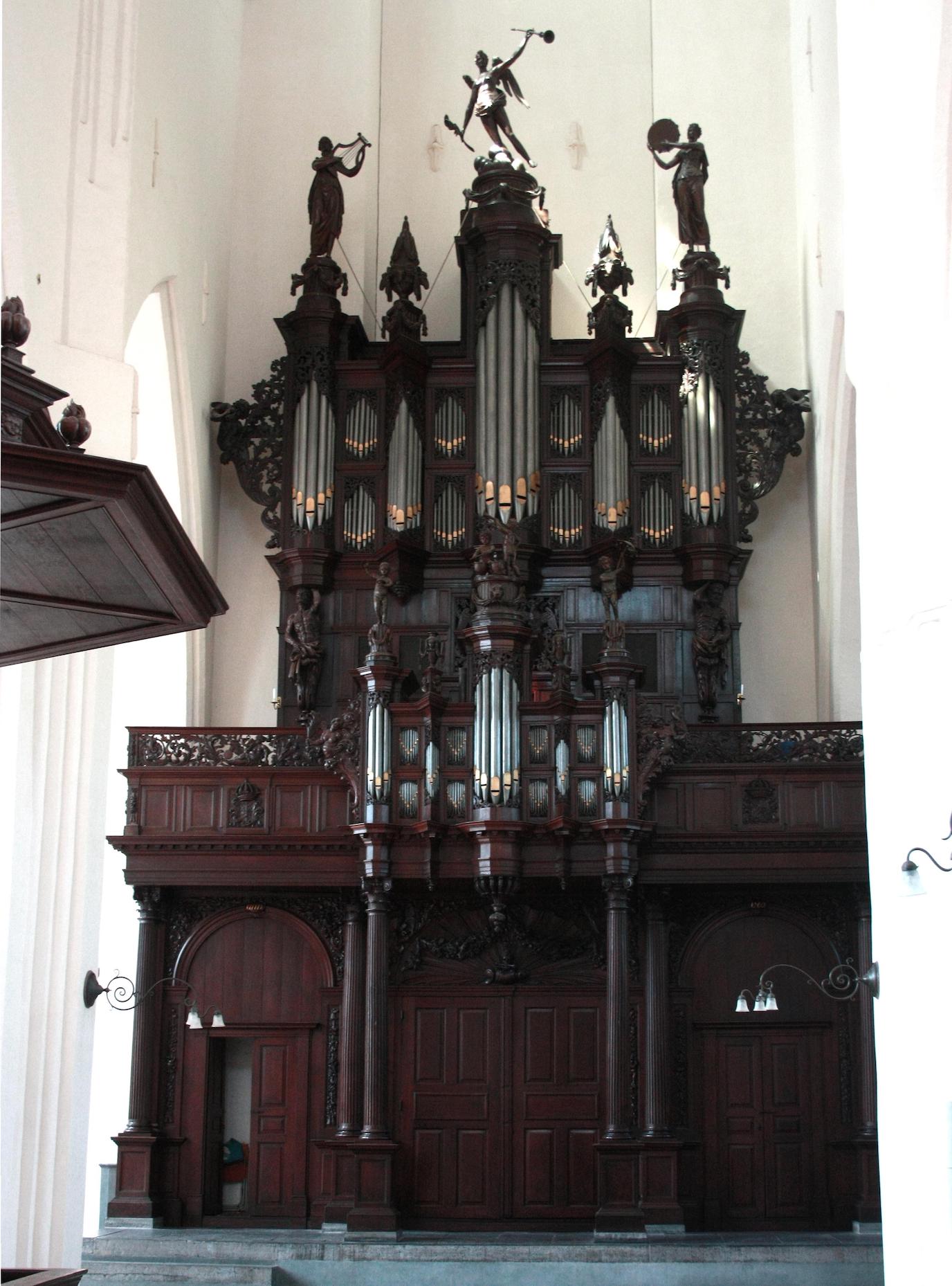 The 1702 Arp Schnitger organ at the Aa-kerk in Groningen, the Netherlands. |


Where is the future of organbuilding headed?
I think most of the people in the organ world don’t have the slightest idea. If they don’t have the proper number of pistons to push, they don’t know what to do! The more that I have studied historic instruments, I am really curious about how did we ever get here? Where will it go? That is really the question for me. The organ has usually been connected with the Christian church, which is now in such a state that heaven only knows what it is going to do. It is interesting that I built 66 organs and not a single one is in a Catholic church. The majority of my instruments are still where they started out — the only one lost is the Lorain organ in the arson fire in 2014. I think it is really nice when the organs are in the church and they help lead the congregational singing. From my viewpoint, that is extremely important. It has always been a strong focus for me to make sure the organ works with the people singing. Interestingly, my best clients were the Episcopalians and I always got along fine with them. Music has an incredible effect on people and the good news is, I think it is always very positive.
Do you have any words of advice for upcoming organ builders?
If there is any one thing, it is the importance of studying the historic organs. Go all the way back: Jan van Covelens, Lorenzo da Prato. They knew what they were doing.
You are writing a book too?
I’ll never get it done! I had a lot written from this past summer but much of it was lost when my laptop got stolen. I do too much “improving” along the way and I go too slowly. In general, it is about “How to Build Organs” — the ideas from all those many years of my experience. It is not trying to be a copy of anything, it is not trying to be “Dom Bedos” — it is from scratch. I’m not trying to tell anyone what to do. I’m very funny about that — it’s one of the reasons I got along well with my employees, because even though I am a little bit cuckoo, at least they said, “You’re pretty good to work with because even though you are very critical about what is okay, actually you let us do what we want to do!”
––––––––––––––––––––––––
The views and opinions expressed in this article are those of the author, and do not necessarily reflect the position of Vox Humana.